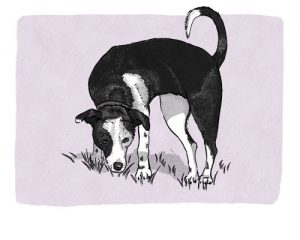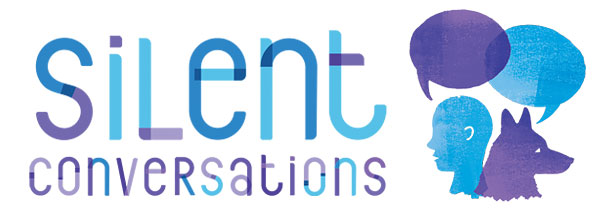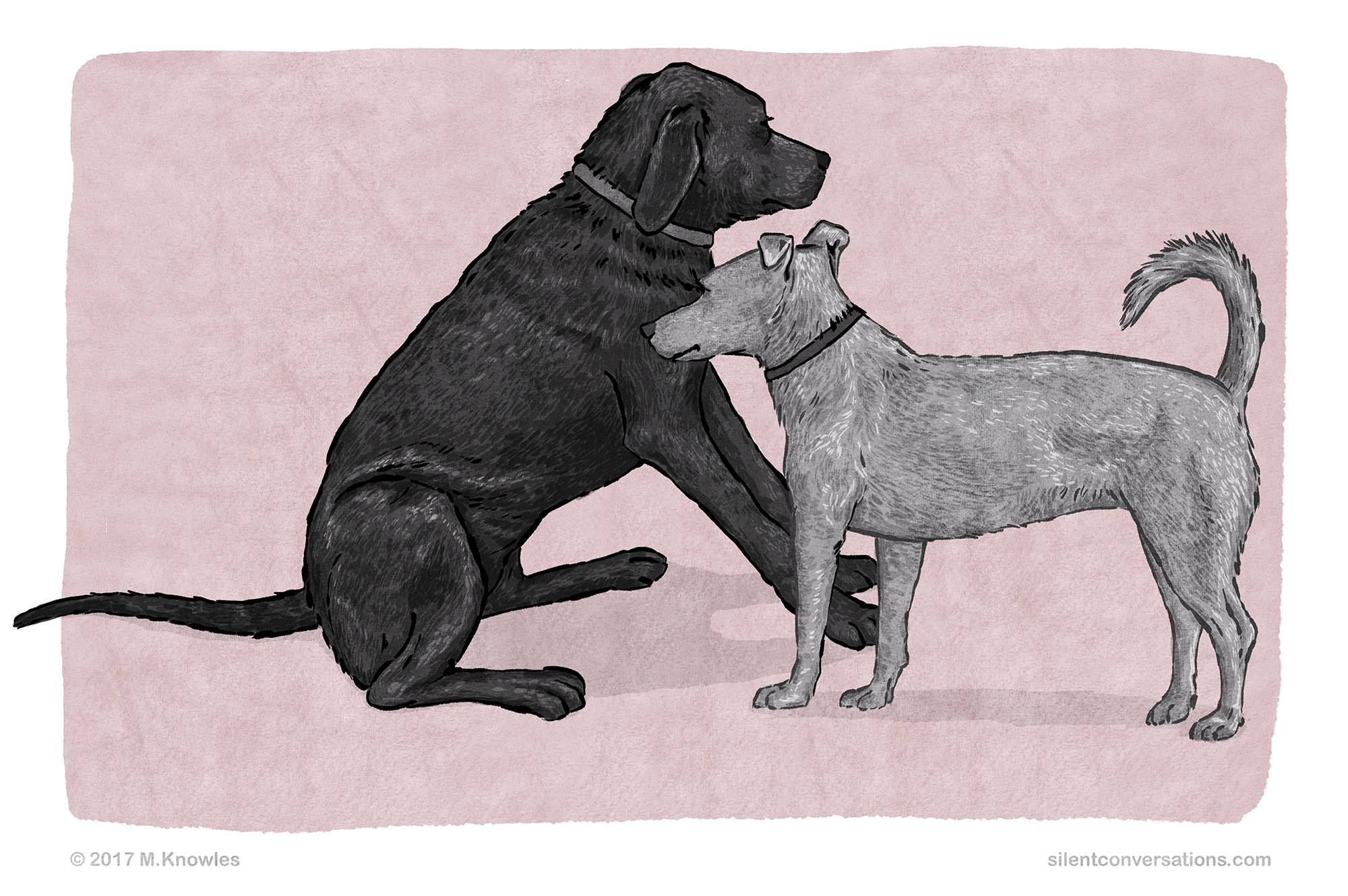
What are Calming Signals?
The term ‘Calming signal’ was coined by Turid Rugaas to describe dog body language signals used to calm another party down. Turid Rugaas and Ståle Ødegård spent countless hours observing dog body language, taking note of body language signals used by dogs to communicate.
Body language had been studied in wolves and the term ‘cut-off signals’ was used to describe body language to cut off aggression in other wolves. Turid did not feel that the term ‘cut-off’ was an appropriate term, as body language could be used as prevention – to avoid threats and to achieve a calming effect, negotiating rather than cutting-off behaviour.
Turid felt the body language signals could be used in a few ways: as a means of the dogs calming themselves when feeling stressed or uncomfortable, as an attempt to make others feel comfortable, and as an indication of good will and peaceful intentions within an interaction – a form of negotiation used in early stages of an interaction in order to avoid threats or enable dogs to make friends with others.
Turid shared her observations of dog body language in a book entitled “On Talking Terms with Dogs : Calming Signals”.
There are at least 30 signals or more, including subtle signals such as a head turn, shortening of the eye, turning the body away, lip lick, freezing, sitting, lying down, yawning, sniffing and many more. Here are some photo examples of calming signals on Turid’s website.
There has been debate in dog circles whether calming signals are actually deliberate signals to calm another party down or stress signals given off by a dog when feeling divided in a situation. It could be either or both, depending on the circumstances. Communication and body language do not exist within a vacuum and should be viewed within context, it is important to observe the whole picture. The environment, circumstances and parties involved give information as to what a dog may be communicating in that particular instance. Each dog is an individual and will have varying skills, experiences and preferred ways of communicating. Some body language is deliberate and some may be unconscious, just as you may unconsciously start to mess with your hair or scratch if you are feeling uncomfortable. Signals should not be looked at in isolation, but the whole body of the dog should be observed to ascertain what the dog might be communicating.
Further reading:
Introduction to Dog Body Language
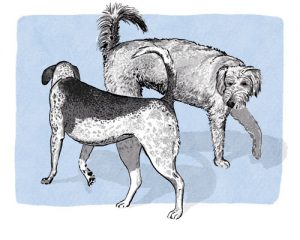
Benefits of Learning Dog Body Language
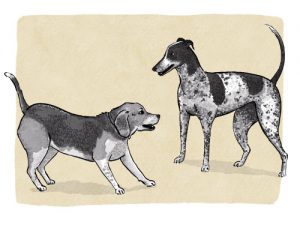
Introduction to Silent Conversations
